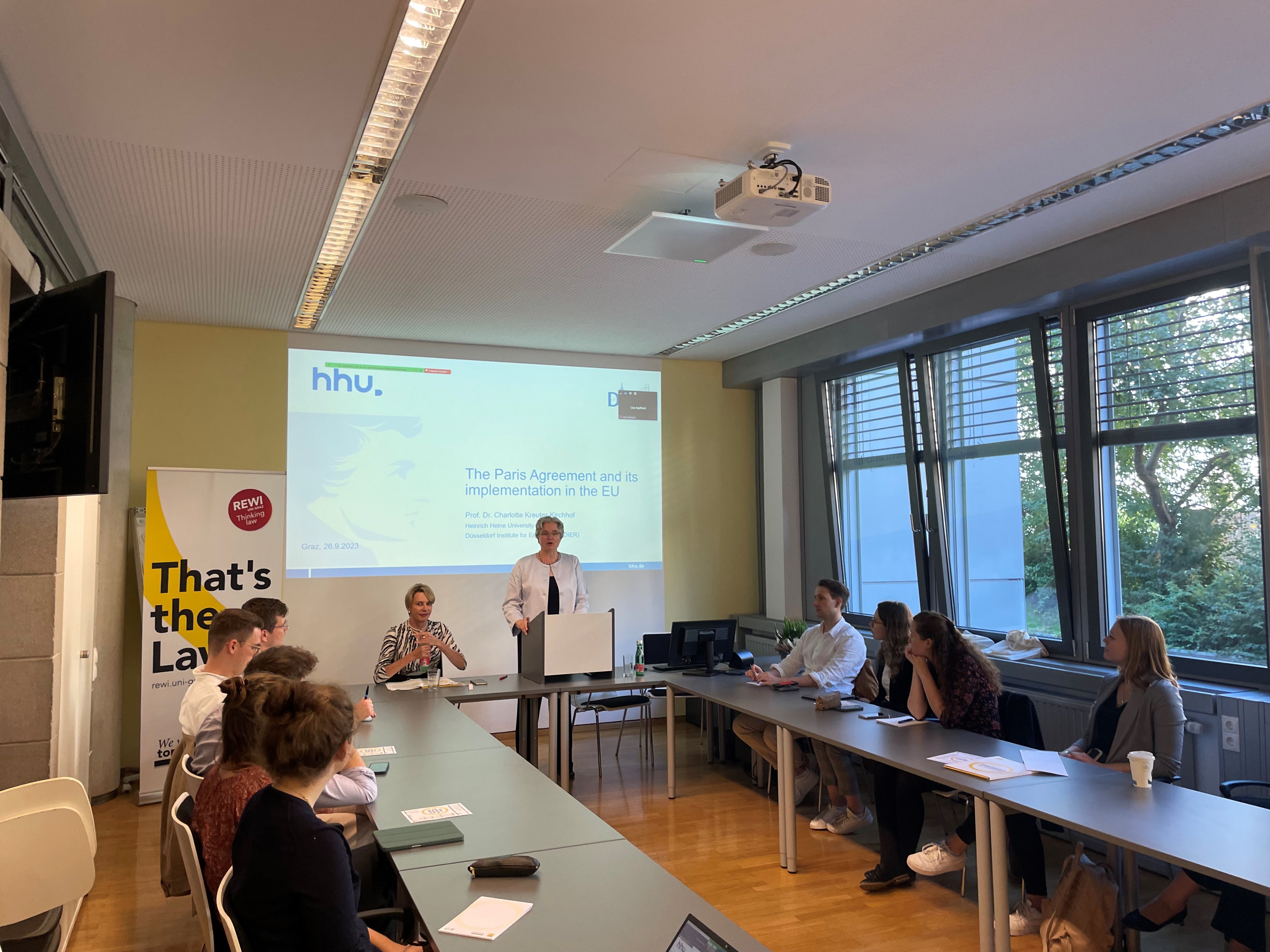With the aim to hold the increase in the global average temperature to well below 2°C above pre-industrial levels and pursuing efforts to limit the temperature increase to 1.5°C, the Parties to the Paris Agreement agreed on a binding, global, quantified greenhouse gas emissions limitation. In order to achieve this global climate protection target, states define and maintain nationally determined contributions to combat climate change. Currently, the Conference of the Parties undertakes the first global stocktake under the Paris Agreement to assesses the collective progress of the states towards achieving their common climate protection target. On the basis of this global stocktake, the states are then to strengthen their existing nationally determined contributions in order to align them with the joint 1.5°C/2°C target.
Under the Paris Agreement, the European Union and its Member States communicated to jointly reduce greenhouse gas emissions across the EU by at least 55% by 2030 compared to 1990 levels. To implement this European climate protection target, the EU uses a three-pillar strategy that differentiates by sectors. The lecture analyses this EU climate protection strategy for the implementation of the Paris Agreement, the current development under the Green Deal and the challenges of the energy crisis resulting from Russia's invasion of Ukraine.
The Institute of International Law would like to thank Prof. Charlotte Kreuter-Kirchhof for her visit to Graz and for the interesting GILDS lecture as well as her role as commentatzor during the ILC workshop the following day. Further thanks go to all participants, both in person and online, for the very lively discussion.
More information on the GILDS event series can be found here.
